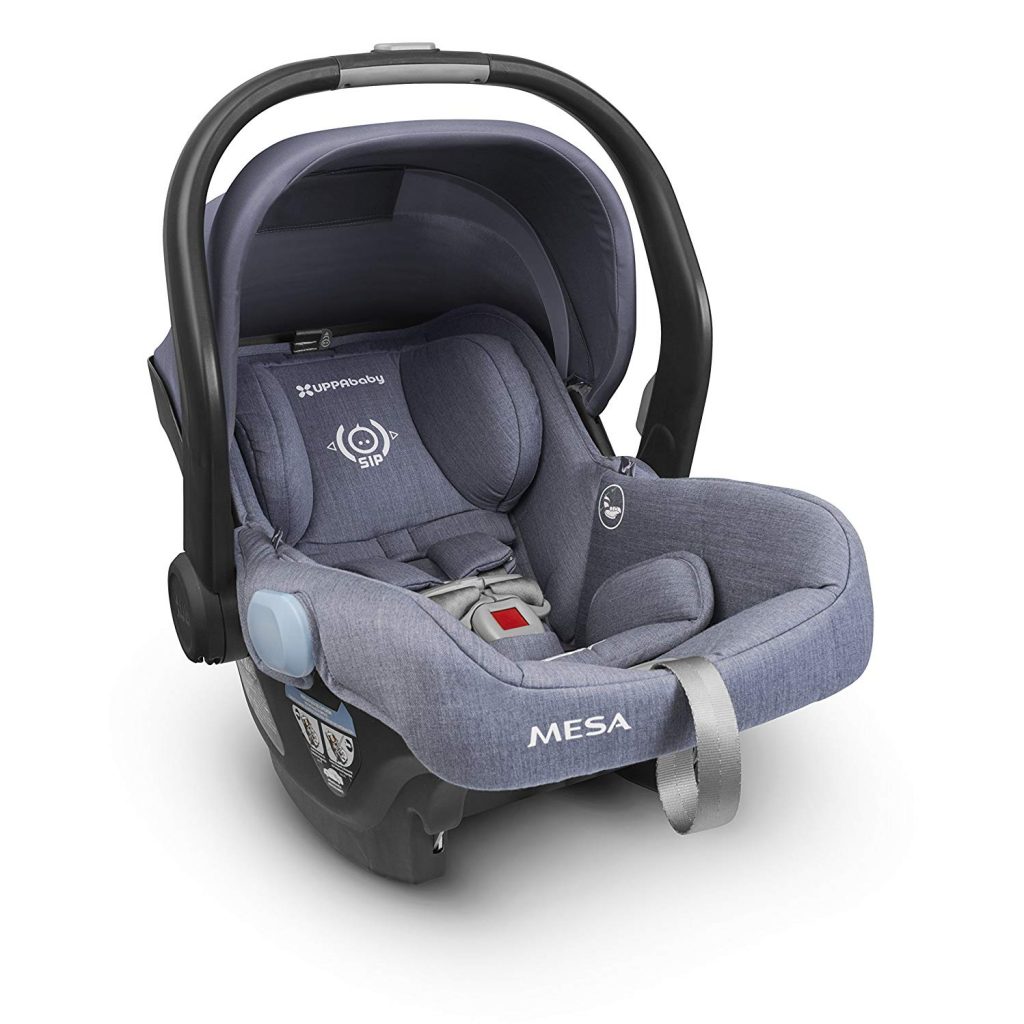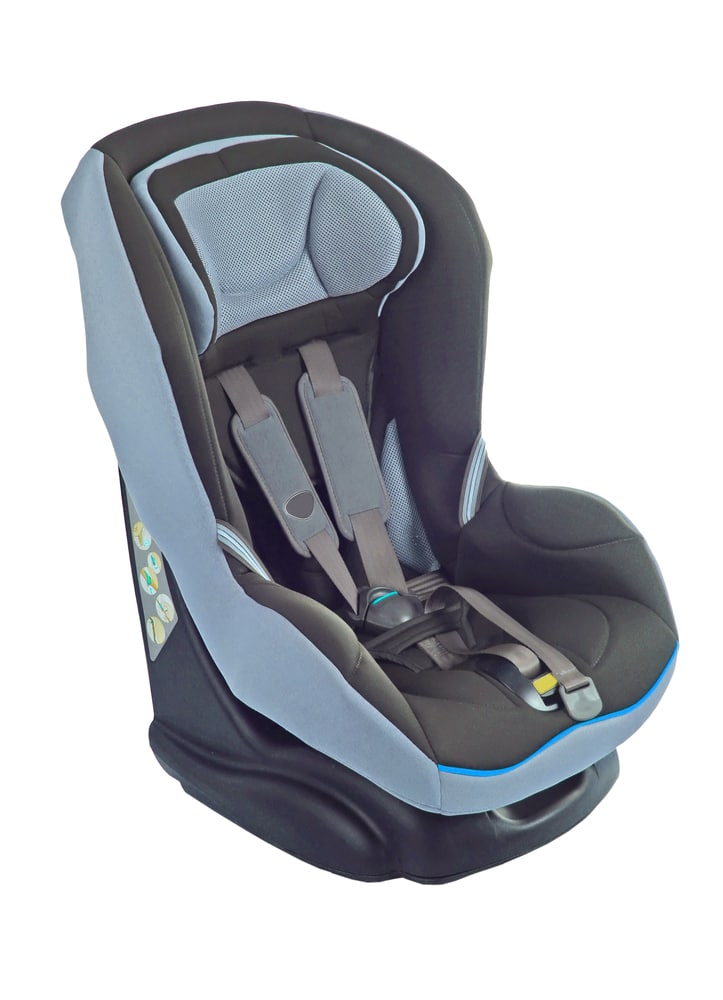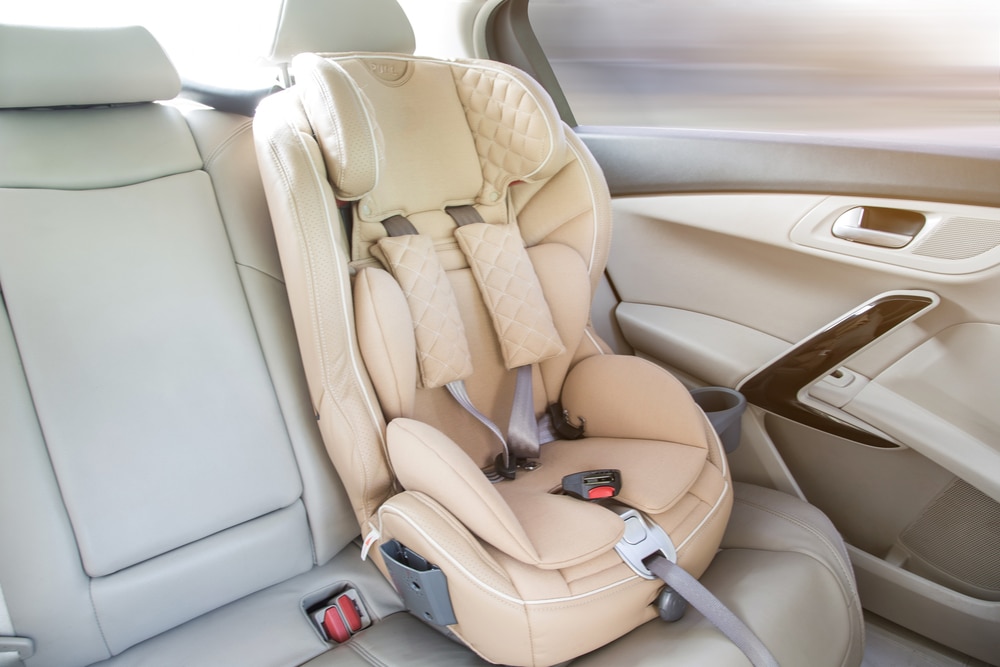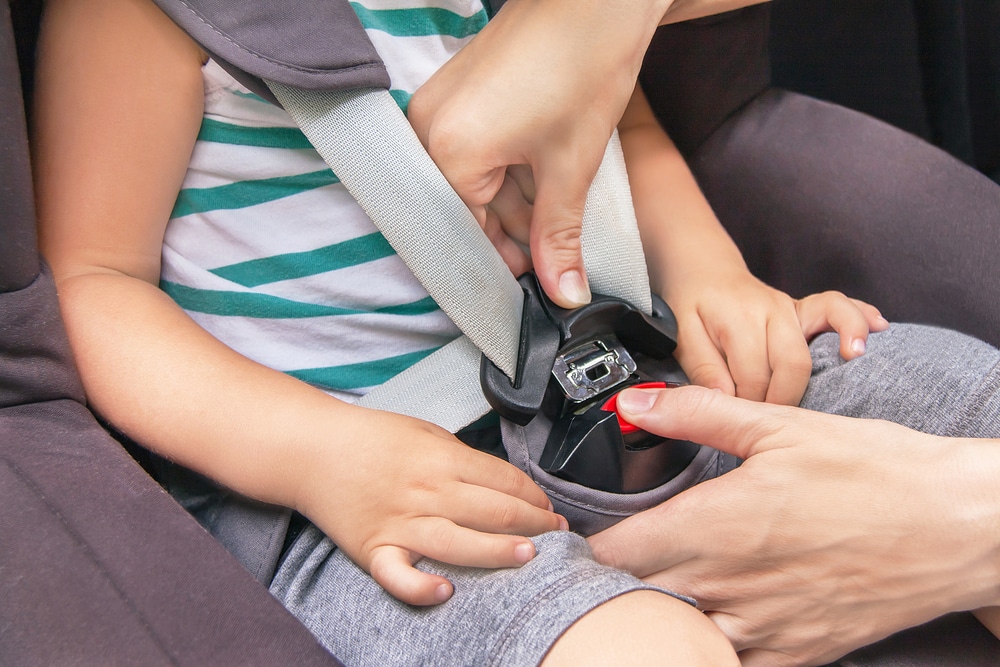Laws governing car seat use for children exist everywhere, but they vary significantly from state to state. Nevada car seat laws can appear vague if you don’t read the text of the laws themselves, which means you could unwittingly find yourself in violation of them.
Not only is choosing the right child safety seat for your child’s age, height, and weight necessary but knowing the laws in the state in which you’re driving is essential, too.

What Are Nevada’s Car Seat Laws?
In general, Nevada simply requires all children under the age of six and who weigh less than 60 pounds to ride in a car seat appropriate for their size and weight. If you look closer, though, different parts of the full law apply to different safety seats.
Specifically, Section 484B.157 of the Nevada Revised Statutes stipulates that children not only ride in the appropriate car seats but also require those seats to have the official approval of the U.S. Department of Transportation under the Federal Motor Vehicle Safety Standards.
Parents must install those seats according to the manufacturer’s directions and attachments or in a way that the National Highway Traffic Safety Administration approves of.
Despite the vagueness and brevity of car seat laws in Nevada, they do have recommendations for children and safety seats for specific age groups.
Infant Seats: Ages 12 Months and Under

Children that are 12 months of age and under should always ride in a rear-facing car seat. Specifically, you want a rear-facing infant seat that reclines properly and protects your baby’s head, neck, and back in the event of an accident.
These seats typically have a moving handle and a base from which you can remove them. Once your child outgrows this seat, you can switch to a convertible car seat.
Toddler Seats: Ages One to Three Years

You should keep your child in a rear-facing car seat for as long as possible, but you can use a convertible or three-in-one seat during this time. In general, you should keep your child in a rear-facing car seat until they reach the maximum height, weight, and size for such car seats.
At this point, they’re ready for a front-facing car seat.
Child Seats: Ages Four to Seven

Children at these ages still aren’t old enough to ride without a car seat because a car’s seat belts are too large to keep them safe. Use a forward-facing seat with a harness until they reach the height or weight limit specified on the seat.
When Can My Child Stop Using a Car Seat?
The point at which a child can stop using a safety seat is either when they turn six or when they outgrow forward-facing car seats (between ages four and seven), whichever comes last under Nevada law (remember, the law requires all children six and under to be in a car seat).
Once they’ve outgrown the largest child safety seats, they need booster seats until they’re tall enough for your car’s seat belts to fit properly. Avoid getting complacent during this time, though. Some children should ride in booster seats until they’re ten, 11, or even 12 due to their size.
Using Seat Belts
You can determine when your child is ready to ride in the car without a booster seat by checking how the seat belt fits:
- The lap belt should fit snugly and lie flat across the tops of your child’s thighs, not their tummy.
- The shoulder strap should rest snug and flat across their shoulder and chest, not their neck, and definitely not their face.
Once your child has reached the size where your car’s seat belts fit this way, they no longer need to use any kind of a car seat.
When Can My Child Start Riding in the Front Seat?
Even after your child can safely use your car’s seat belts under Nevada’s seat belt laws and federal safety standards, they should still ride in the middle or backseat.
Things like airbag deployment can be dangerous for your child in the event of an accident. There’s also a greater risk of getting hit with shattered glass and other things in the front seat than the back seat, making it unsafe for your child to ride up front until they’re about 13 years old.
Car manufacturers have gone to such lengths to protect the passengers riding in the front seat that it’s no longer the most dangerous place in the car during an accident for adults. However, that doesn’t mean the front seat has become safer for children than the middle and back seats.
Penalties for Failure to Obey Nevada Car Seat Laws
What happens when you break any Nevada booster seat law or Nevada carseat law? It depends on the severity of the violation and whether you’ve broken these laws before.
According to paragraph two of Section 484B.157 of the Nevada Revised Statutes, you will face the following penalties for violating car seat laws:
- First offense: Fine of at least $100 and no more than $500, or ten to 50 hours of community service
- Second offense: Fine of at least $500 and no more than $1,000, or 50 to 100 hours of community service
- Third offense: Drivers license suspension of 30 to 180 days
Also, the court must provide a list of people and agencies legally approved to teach safety courses and inspect child safety and restraint systems. This list has to include information on any required fees.
People who successfully complete these programs and show proof of that to the court may find their penalties reduced or waived entirely.
Nevada Seat Belt Law

Section 484D.495 of the Nevada Revised Statutes requires everyone riding in a car to wear a seat belt no matter where they’re sitting unless they’re children who must ride in a car seat. Failure to do is considered a misdemeanor and can result in a $25 fine.
In the event of an accident, failure to wear a seat belt can harm any case you might bring against the other driver(s) involved. However, it’s not a moving violation. Violating car seat laws in Nevada is considered far worse and results in heavier penalties.
Why Have Car Seat and Seat Belt Laws?
In 2018, over 600 children died in car accidents, and over 97,000 were injured. Roughly one-third of children ages 12 and under who died weren’t buckled in. Every year, children die in accidents because they weren’t properly restrained or were sitting in the wrong seat in the car.
This is why Nevada and all other states have car seat and seat belt laws. Both save lives.
Final Thoughts
Your child needs different types of car seats at different ages, weights, and sizes, to remain as safe as possible while riding in your car. The State of Nevada requires you to keep your children in appropriate car seats until they’re six years old and 60 pounds or heavier.
That may sound vague, but they have far more specific recommendations that will help you understand what to do to ensure your child’s safety as you drive.





